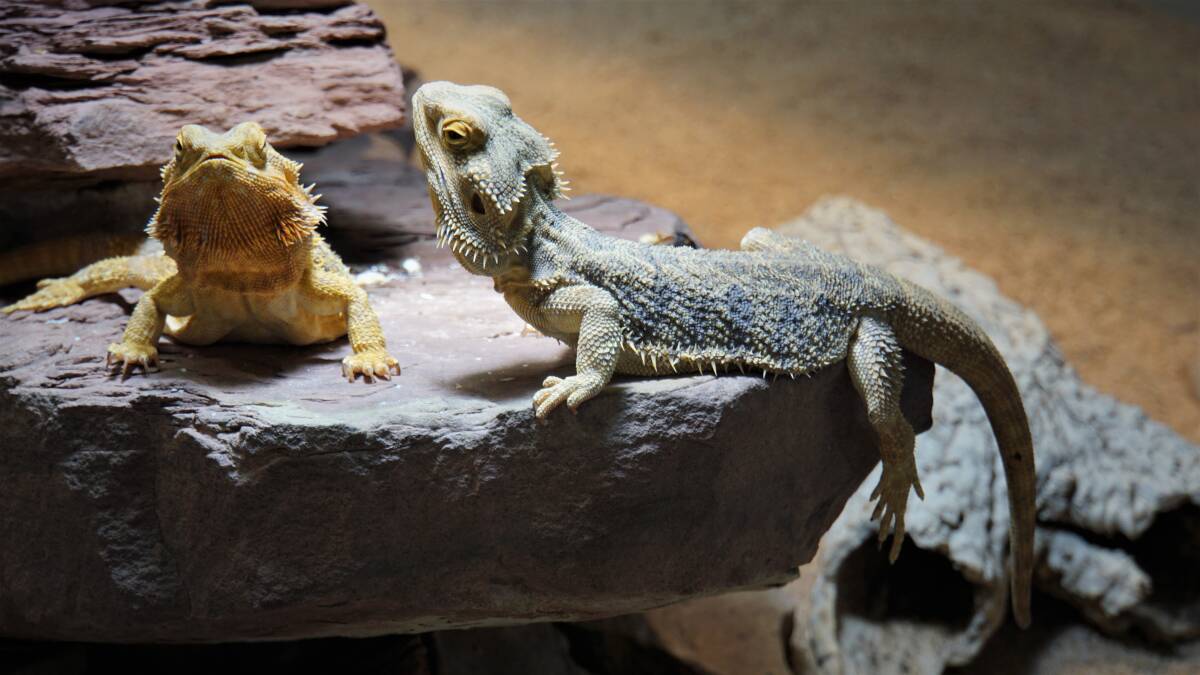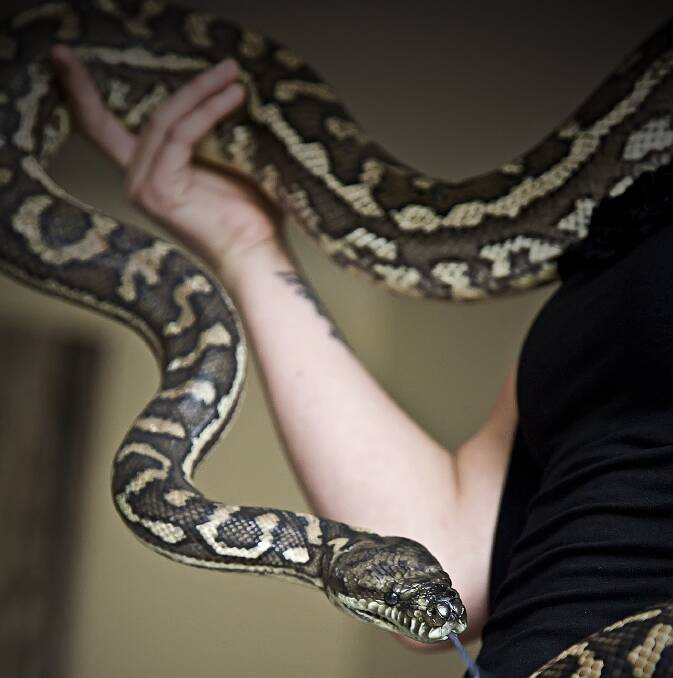YOUR PETS

Understanding how to handle your companion reptile correctly is crucial. It is not a task to be taken lightly. It requires confidence, knowledge, and often assistance from someone, especially if the reptile is large.
Handling lizards
The attitude and behavior of lizards vary greatly depending on species, age, and health. Bearded dragons and larger skinks (such as blue tongue lizards) are generally placid and accept handling, while eastern water dragons can be flighty and show aggressive behaviour. Monitors can be potentially dangerous, capable of biting, scratching, and using their tails as whips.
Be aware of autotomy - the ability of geckos and skinks to drop their tail to distract a predator while the lizard escapes. Unfortunately, this sometimes happens when these animals are handled, particularly if lifted by their tail.
Providing lizards with spinal and leg support is important when handling them. If they feel unstable or unsupported, they are more likely to struggle as they attempt to escape, and this is stressful and can result in injury.
Instead, be the rock or the tree, i.e. support the lizard on your hand or forearm with their legs supported, and they will usually relax. If needed, bearded dragons can be gently restrained by holding the base of their tail with your thumb (while they are supported on your arm). No more restraint than that is usually needed and they should not be squeezed or restrained forcibly as this could trigger an escape response.

Handling snakes
Most Australian pythons, who are captive bred and used to being handled, are usually placid and will accept handling.
It's important to be careful when handling pythons who are shedding, or about to shed, as their skin can be very sensitive and even painful. Be aware that snakes who are hungry will be more likely to bite the hand of their handler at feeding time.
Restraining the head of a python will usually cause them to struggle but, if you gently support the body only, the python will tend to relax. Remember to support their spine at all times - a good rule of thumb is to have one person to every metre of snake. I.e. a 3-metre snake will need three people to safely support it when handled. If you have a large python, longer than two metres, never handle the snake alone.
Handling turtles
When it comes to turtles, they are generally easy to handle but be careful - a healthy turtle can be surprisingly mobile. Turtles do not have teeth, but the strong keratin edge on their lower jaw can deliver a painful nip. Being raked by the long claws on their feet is no laughing matter either. This can be avoided by holding them by the rim of the upper shell at the front and back, or at their sides. Something else to be aware of - the glands at either end of the bridge (the shell between the upper and lower shells) can discharge a pungent fluid.
Signs of stress
It's important to watch for signs of stress when handling your reptile. A bearded dragon will darken the skin on its back, sides, and under the chin (the beard) if stressed.
It is best to return reptiles to their enclosure when stressed, otherwise their welfare could be endangered or they may become aggressive, or fall ill.
Stressed snakes may make loud and constant hissing sounds, increase their rate of tongue flicking, pass volumes of faeces and urine, and strike at you (even through the enclosure wall). If this is happening, it is best to leave your snake alone. Ignoring the warning signs and continuing to handle them is likely to make the stress (and, potentially, the aggression) worse.
Turtles will attempt to bite or scratch you, withdraw the head, tail and limbs into the shell, or passing large volumes of urine when stressed. It is best to walk away and try to handle it again later.
For more information and images of correct handling techniques visit the RSPCA Knowledgebase.

